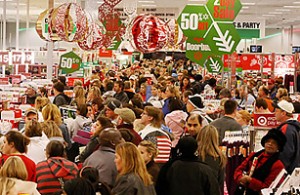With the holiday season quickly approaching us, most people are already beginning to think about who they have to buy gifts for, if not already starting their online shopping. One aspect of the holiday season that escapes most shoppers, though, is their overall contribution to retailers and the economy overall. The holiday season is known to be the most important time of year for retailers everywhere; contributing to 40% of their annual sales in a period of about two months. Thankfully every year around this time, forecasters begin looking at last year’s holiday sales in order to predict as best as they can the holiday sales for this year.
At least ten entities are in charge of making this prediction and this year their predictions range from a 3 to 4.1 percent increase in holiday sales over last year. Each forecaster’s predictions are different because of the varying methods that they use. Most importantly, though, is the fact that all of this year’s predictions are lower than the actual gain in sales of last year, which was 5.8 percent.
Each forecaster takes into account different variables when predicting holiday sales each year. The National Retail Federation, for example, looks at sales from the previous month, the housing market, consumer confidence, weather, and employment levels. A mere increase in holiday temperatures could drastically decrease purchases of common winter items like jackets, scarves, and gloves.
Interestingly enough, these predictions only slightly affect retailers. By the time these forecasts come out, retailers have already ordered their merchandise for the holiday season. Unless there was evidence that consumers would spend much more than anticipated, retailers probably wouldn’t increase any of their orders. Other retailers who are afraid of being left with too much excess inventory this year may be inclined to offer better discounts, or begin discounting even sooner than last year.
With all the different methods of forecasting going on, it may come as no surprise that these forecasts are usually wrong, if only by a few percentage points. Some years the forecasts are very optimistic while in others shoppers spend much more than anticipated.
What do you think are some better if not more accurate methods of predicting holiday sales from year to year? If retailers have already ordered inventory months in advance, why are these forecasts so important? What do you think are the factors that determine high holiday sales one year and lower sales in another year?
